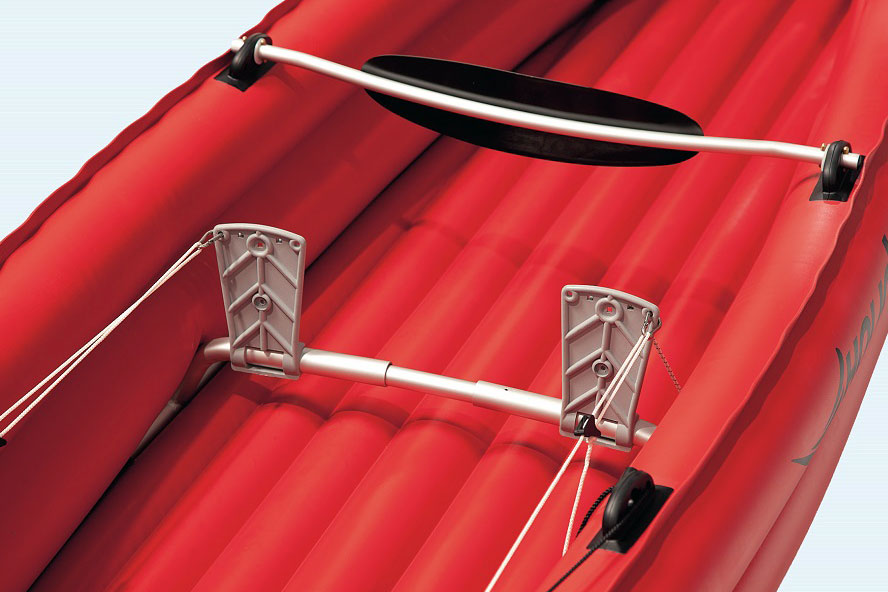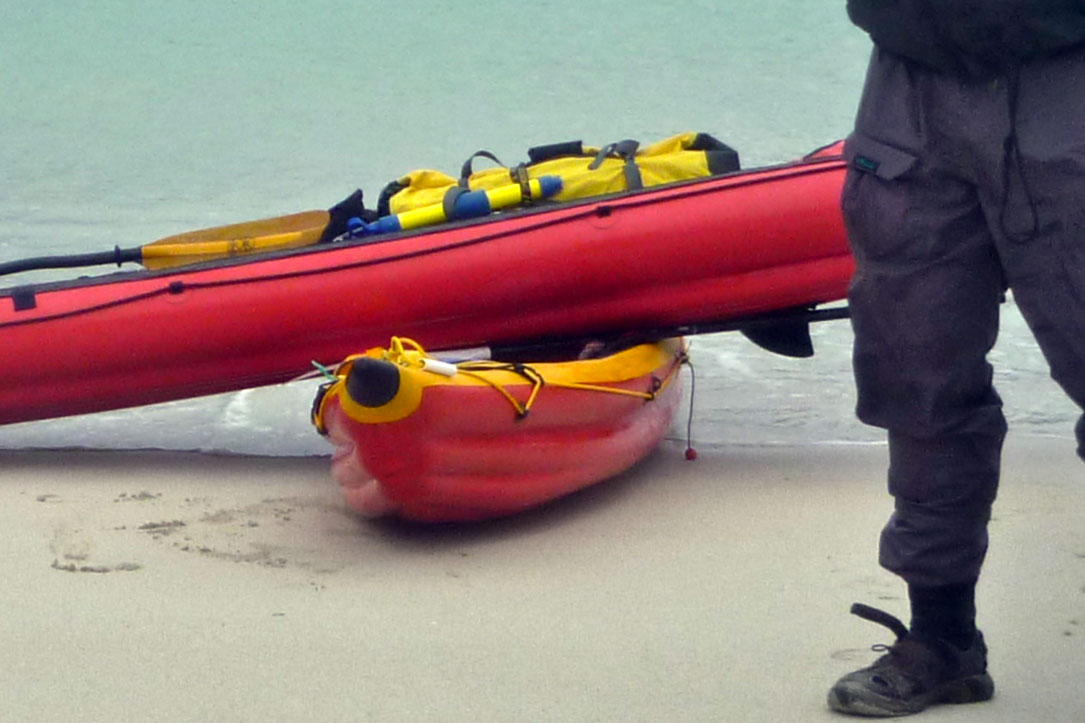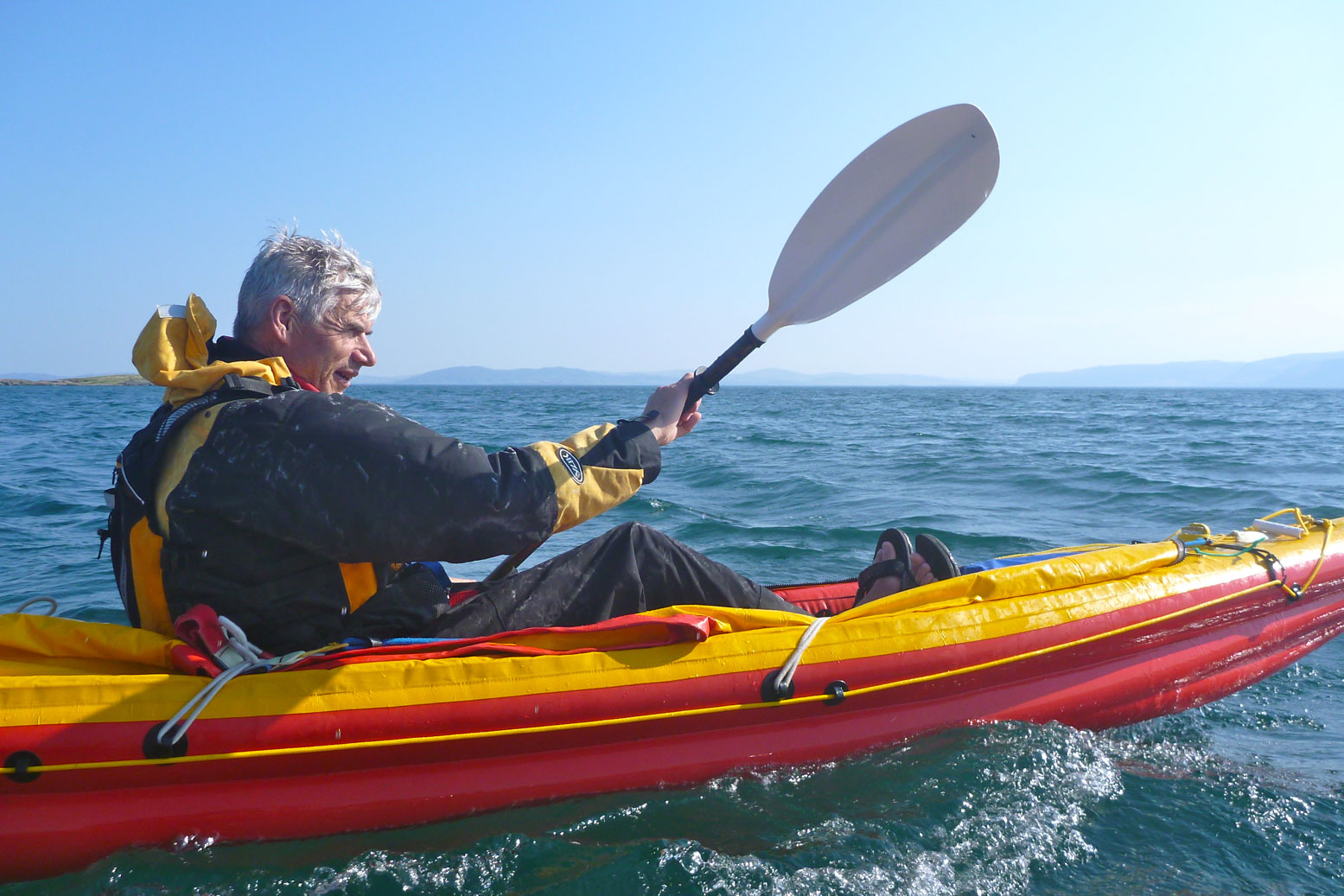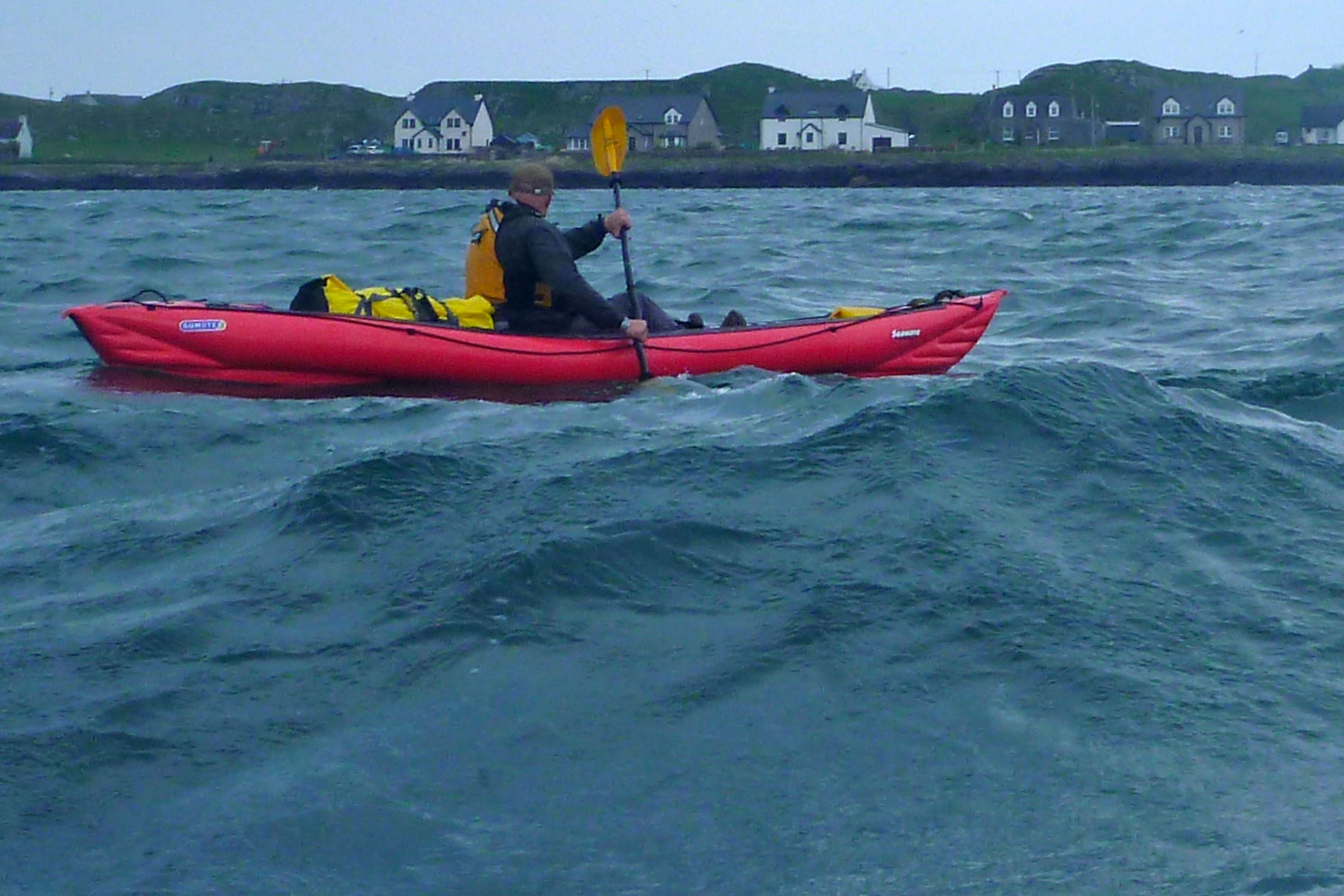Gumotex’s 2016 factory version
Making the prototype Mk1 rudder
Testing the Mk1 prototype
Mk2 rudder tested (gets to the point)
I am on Gumotex Seawave 2 and a while back had the Incept K40 for a year or more. IMO, these are still two of the best IKs around for sea kayaking and touring. Fast, stable and firm. Like my paddle with my former Grabner Amigo, a longer trip with a K40 also gave me a chance to reappraise the pros and cons of these two IKs. Gael’s red K40 is the same one I tested back in 2012.
As you can see in this table, the Nitrilon Seawave is a little longer, quite a lot wider but less spacious inside. It claims a much greater payload, has space for up to 2.5 paddlers as well as fitting an optional fully removable deck and a fixed skeg with a rudder kit available. The K40 is made from a stiffer ‘PVC-urethane alloy’ fabric, has a zip-up/roll-back deck, a rudder and a single seat. The twin side-beam hull explains its slimness as well as the greater internal width. Both these IKs weigh around 17kg.
Paddling with the K40 for a couple of days, it was a little faster than my Seawave. Gael’s K40 was loaded a little more heavily, but my added weight easily exceeded that. Both boats run similar pressures but the slimmer, stiffer fabric’d K40 had the advantage, even though it’s a shorter. Gael may also have a more efficient paddling technique, but overall we agreed that in the windy conditions we were experiencing, it was his rudder which made the difference when it came to maintaining steady progress.
Simply put, with a bit of rudder correction to compensate for winds pushing the boat off course, Gael could carry on paddling normally. At the same time, I had to correct my steering by pushing hard on the upwind arm and trailing the other to maintain a course, so I was only powering with one and a bit arms. This gave the K40 about 5–10 minutes over an hour, while also reducing – or at least balancing – paddling effort.
Running a Grabner Holiday, Gael is a rudder fan and thinks adding one to a Seawave would make it a perfect IK. Me, I wasn’t so sure the added complexity and risk of breakage was worth it, but I I talked myself into it. As long as my system is not like the Incept’s horribly mushy rudder actuation. It was less effort to paddle Gael’s K40, but pushing hard on the inflatable pedals was a bit like using a cushion for a steering wheel.
A great way to improve the K40 would be to fit something like Grabner plastic pedals pivoting on a rigid bar (below left). Or even a pivoting footrest tube (middle) as show here. The actual pivoting- and rudder-lifting mechanism at the back looks like a standard sea kayak arrangement with a rudder pin. We both agreed the K40’s generic hardshell rudder blade is too small or short for this boat when the seas get lumpy or the winds exceed F4. Maybe better to accept an IK’s limitations and not go out in those conditions, as I found once, though I’ve just remembered the hand-skeg-steering idea a visitor suggested to me: pivoting the half inserted Gumotex skeg using cords (right) to fix an angle against a steady wind.

Grabner rudder pedals 
Pivoting footrest 
Skeg hand trimming

Especially when loaded, my Seawave’s fixed skeg can be a bit of a pain at the shore. I don’t like the idea of the heavy IK pressing on the skeg so look for a rock, use my Pelicase or lean on the K40. But that’s all a small price to pay for the benefits the skeg brings at sea.
I’ve thought of fitting a retracting/trailing skeg to get round this, but if I go that far I may as well install a rudder. Generic SoT rudders on eBay go for just 20 quid and could help review my dormant sailing experiments which I recalled fondly during the backwinds of Mull.
The other impression of the K40 was the initial tippiness – yikes, it’s been a while since I’ve experienced that. In fact it soon went away and anyway, was helped by the thigh straps which again, I’m reminded, don’t snag the knees as securely as my set ups in the Amigo and Seawave – possibly because the front mount is too far forward (using the rudder pedal mounts). But then again, I should have adjusted the rudder-footrest towards me a good few inches.
The Incept was also much more roomy thanks to the slim side tubes. That makes the thigh straps more important, and I actually missed the packraft-like jammed-in feeling between my Gumotex’s fat side tubes. The seat didn’t feel as comfy and secure as the packraft/SoT set up on my Seawave, and all-in-all I felt a bit out of sorts in the Incept which helped me realise how well my Seawave is suited to my sort of paddling. About time; it’s taken a few IKs to get there.




